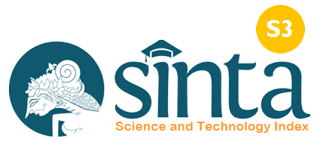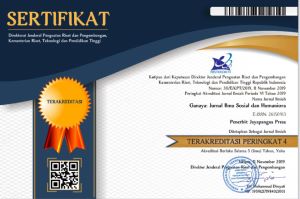Validasi Kelayakan E-Modul Pajak Penghasilan Berbasis Canva dalam Pembelajaran Perpajakan di Sekolah Menengah Kejuruan
DOI:
https://doi.org/10.37329/cetta.v8i3.4725Keywords:
E-Module, Income Tax, Canva, Learning Media, ValidationAbstract
This study aims to determine the feasibility of a Canva-based Income Tax e-module as a learning medium in Vocational High Schools (SMK). It is part of a development research project using a descriptive quantitative approach, with expert validation as the main method. Three validators were involved in the validation process, consisting of a subject matter expert, a language expert, and a media expert. The instrument used was an assessment sheet employing a Likert scale to evaluate the feasibility of the e-module in terms of content accuracy, language use, and media design. The validation results showed that the e-module received an average score of 88% from the content expert, 94% from the language expert, and 89% from the media expert, all of which fall under the "Highly Feasible" category. These results indicate that the e-module meets quality standards in terms of accurate and relevant content, clear and communicative language, and visually engaging media design that supports the learning process. Based on these findings, it can be concluded that the Canva-based Income Tax e-module is highly suitable for use as a learning tool in vocational education. The e-module is considered effective for supporting self-directed, interactive, and engaging learning, aligned with the needs of students in the digital era. Therefore, it is expected that this e-module can enhance the effectiveness, engagement, and overall quality of income tax instruction in vocational high schools, contributing positively to the teaching and learning process in accounting and taxation subjects.
References
Ali, A., Apriyanto, A., Haryanti, T., & Hidayah, H. (2024). Metode Pembelajaran Inovatif: Mengembangkan Teknik Mengajar di Abad 21. Jambi: PT Sonpedia Publishing Indonesia.
Astuti, R., & Widodo, S. (2021). Strategi Pembelajaran Pajak di SMK: Studi Kualitatif. Jurnal Pendidikan Vokasi, 11(3), 203–211.
Diny, S. R., Fidyallah, N. F., & Kusumaningtyas, D. P. (2025). Pengembangan E-Modul Berbasis Canva Untuk Siswa Kelas XI di SMKN 44 Jakarta. Jurnal Ilmiah Ekonomi, Manajemen, Bisnis dan Akuntansi, 2(4), 616-623.
Fitriani, F., & Sari, P. M. (2022). Pengembangan E-Modul Pelajaran Ekonomi Berbasis Canva Pada Materi Perkoperasian Kelas X IPS di SMAN 1 Cerenti. Perspektif Pendidikan dan Keguruan, 13(2), 61-69.
Handoyo, T., Ashriyah, I. A., & Kamal, R. (2025). Pengembangan Bahan Ajar Berbasis Multimedia. Harmoni Pendidikan: Jurnal Ilmu Pendidikan, 2(1), 230-250.
Indrayati, I. (2019). Implementasi PAIKEM Pengaruhnya Terhadap Kompetensi, Kualitas, Efisiensi dan Efektivitas Pembelajaran. Media Mahardhika, 17(2), 312-318.
Kemendikbudristek. (2022). Profil Pendidikan Indonesia: Tantangan dan Strategi Pembelajaran Abad 21. Pusat Kurikulum dan Perbukuan.
Magdalena, I. (2021). Belajar Makin Asyik Dengan Desain Pembelajaran Menarik. Jakarta: CV Jejak.
Mardiasmo. (2019). Perpajakan (Edisi terbaru). Yogyakarta: Andi Offset.
Maulinda, T. N., Megawati, E., & Rafidah, F. (2024). Efektivitas Pengembangan E-Modul Interaktif Bahasa Indonesia Materi Teks Prosedur Berbasis Canva. SAP (Susunan Artikel Pendidikan), 8(3), 486-493.
Mayer, R. E. (2021). Multimedia Learning (3rd ed.). Cambridge University Press.
Mutia, T., Suharto, Y., Sahrina, A., Wahyudi, A., Atmaja, M. A. R., & Aprilia, R. (2025). Efektivitas E-Modul Interaktif Berbasis Project Based Learning Terhadap Kemampuan Berpikir Kreatif Siswa. Geodika: Jurnal Kajian Ilmu dan Pendidikan Geografi, 9(1), 42–51.
Prawiradilaga, D. S. (2008). Prinsip Desain Pembelajaran. Jakarta: Prenada Media Group.
Rahmawati, L., Suharni, S., Ambulani, N., Febrian, W. D., Widyatiningtyas, R., & Rita, R. S. (2024). Pemanfaatan Aplikasi Canva Dalam Penyusunan Media Pembelajaran Berbasis Teknologi. Community Development Journal: Jurnal Pengabdian Masyarakat, 5(1), 129-136.
Revina, J., Putri, A., Mudinillah, S., AlHikmah, P., & Batusangkar, I. (n.d.). Penggunaan Aplikasi Canva Untuk Pembelajaran Ilmu Pengetahuan Sosial Kelas VI di SDN 02 Tarantang. Jurnal Pendidikan Guru Madrasah Ibtidaiyah, 4(2).
Setiawan, A., Hidayat, R., & Sari, N. M. (2019). Pembelajaran Aktif Berbasis Multimedia Untuk Meningkatkan Keterlibatan Siswa. Jurnal Teknologi Pendidikan, 21(3), 231-240.
Setyaningsih, W., Chandra, L., & Kurnianingrum, R. (2023). Pembelajaran Sejarah di Madrasah Aliyah Berbasis Budaya Literasi Digital. Agastya: Jurnal Sejarah dan Pembelajarannya, 14(1), 85-100.
Sholeh, B., Hufad, A., & Fathurrohman, M. (2023). Pemanfaatan E-Modul Interaktif Dalam Pembelajaran Mandiri Sesuai Kapasitas Siswa. Risâlah Jurnal Pendidikan dan Studi Islam, 9(2), 665-672.
Sugiyono. (2019). Metode Penelitian Pendidikan (Kuantitatif, Kualitatif, R & D dan Penelitian Tindakan). Bandung: Alfabeta.
Widiyohening, C. R., & Ayuningtyas, P. (2025). Strategi Peningkatan Kompetensi Pajak Melalui Pembelajaran Kontekstual Pada Siswa SMK. Jurnal Pendidikan Indonesia: Teori, Penelitian, dan Inovasi, 5(4).
Zahrani, H., & Hidayat, S. (2024). Penerapan Media Pembelajaran Berbasis Aplikasi Canva Pada Mata Kuliah Literasi Digital di STAI Terpadu Yogyakarta. SALIHA: Jurnal Pendidikan Islam, 7(2), 421-430.
Zulfi Idayanti, & Suleman, M. A. (2024). E-Modul Sebagai Bahan Ajar Mandiri Untuk Meningkatkan Hasil Belajar Peserta Didik. Jurnal Penelitian dan Pengembangan Pendidikan, 8(1), 127–133.
Downloads
Published
How to Cite
Issue
Section
License
Copyright (c) 2025 Yovita Dwi Anggraini, Riswan Jaenudin, Erna Retna Safitri

This work is licensed under a Creative Commons Attribution-ShareAlike 4.0 International License.
An author who publishes in the Cetta : Jurnal Ilmu Pendidikan agrees to the following terms:
- Author retains the copyright and grants the journal the right of first publication of the work simultaneously licensed under the Creative Commons Attribution-ShareAlike 4.0 License that allows others to share the work with an acknowledgement of the work's authorship and initial publication in this journal
- Author is able to enter into separate, additional contractual arrangements for the non-exclusive distribution of the journal's published version of the work (e.g., post it to an institutional repository or publish it in a book) with the acknowledgement of its initial publication in this journal.
- Author is permitted and encouraged to post his/her work online (e.g., in institutional repositories or on their website) prior to and during the submission process, as it can lead to productive exchanges, as well as earlier and greater citation of the published work (See The Effect of Open Access).
Read more about the Creative Commons Attribution-ShareAlike 4.0 Licence here: https://creativecommons.org/licenses/by-sa/4.0/.





